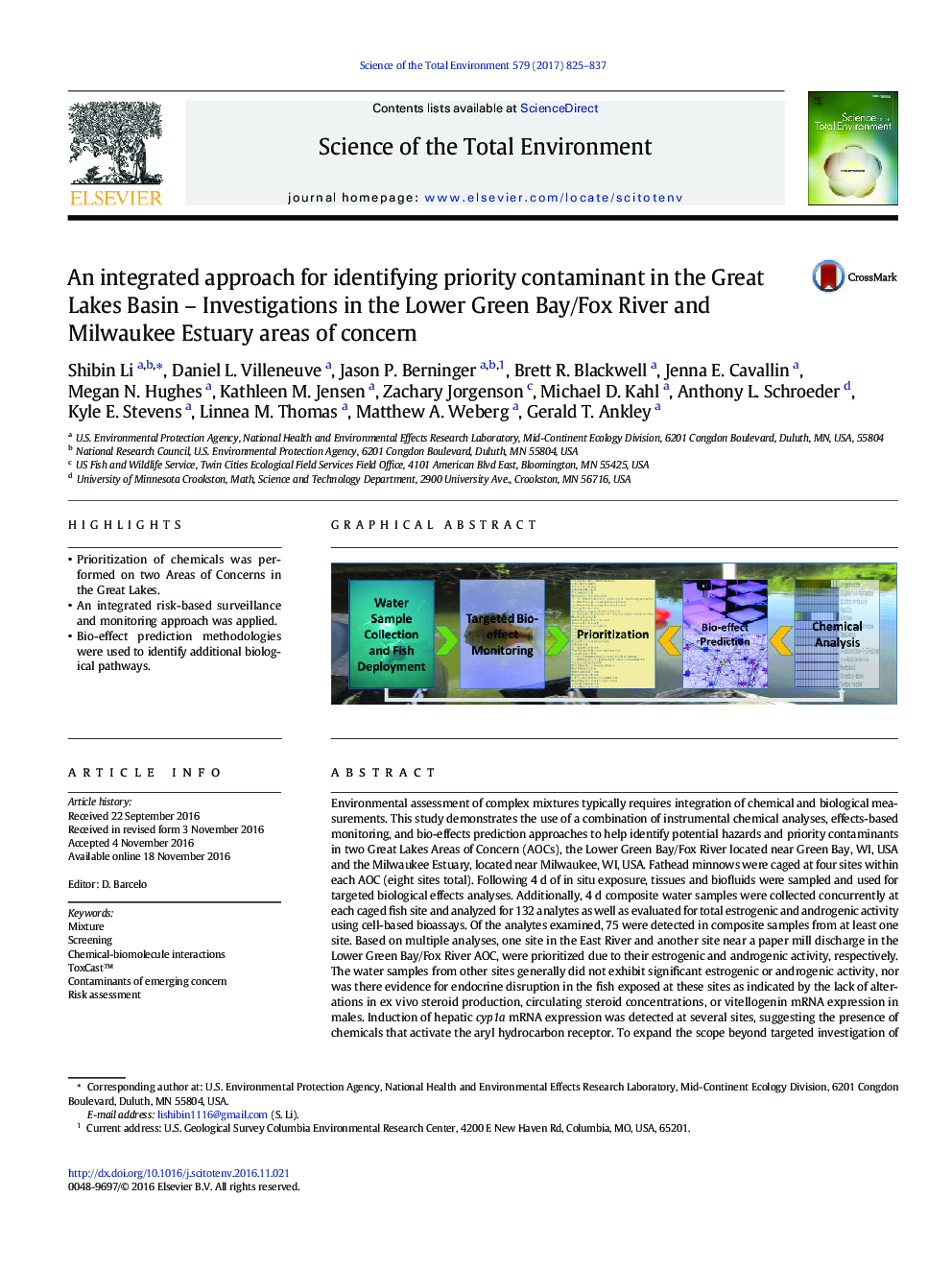| کد مقاله | کد نشریه | سال انتشار | مقاله انگلیسی | نسخه تمام متن |
|---|---|---|---|---|
| 5751437 | 1619712 | 2017 | 13 صفحه PDF | دانلود رایگان |
- Prioritization of chemicals was performed on two Areas of Concerns in the Great Lakes.
- An integrated risk-based surveillance and monitoring approach was applied.
- Bio-effect prediction methodologies were used to identify additional biological pathways.
Environmental assessment of complex mixtures typically requires integration of chemical and biological measurements. This study demonstrates the use of a combination of instrumental chemical analyses, effects-based monitoring, and bio-effects prediction approaches to help identify potential hazards and priority contaminants in two Great Lakes Areas of Concern (AOCs), the Lower Green Bay/Fox River located near Green Bay, WI, USA and the Milwaukee Estuary, located near Milwaukee, WI, USA. Fathead minnows were caged at four sites within each AOC (eight sites total). Following 4Â d of in situ exposure, tissues and biofluids were sampled and used for targeted biological effects analyses. Additionally, 4Â d composite water samples were collected concurrently at each caged fish site and analyzed for 132 analytes as well as evaluated for total estrogenic and androgenic activity using cell-based bioassays. Of the analytes examined, 75 were detected in composite samples from at least one site. Based on multiple analyses, one site in the East River and another site near a paper mill discharge in the Lower Green Bay/Fox River AOC, were prioritized due to their estrogenic and androgenic activity, respectively. The water samples from other sites generally did not exhibit significant estrogenic or androgenic activity, nor was there evidence for endocrine disruption in the fish exposed at these sites as indicated by the lack of alterations in ex vivo steroid production, circulating steroid concentrations, or vitellogenin mRNA expression in males. Induction of hepatic cyp1a mRNA expression was detected at several sites, suggesting the presence of chemicals that activate the aryl hydrocarbon receptor. To expand the scope beyond targeted investigation of endpoints selected a priori, several bio-effects prediction approaches were employed to identify other potentially disturbed biological pathways and related chemical constituents that may warrant future monitoring at these sites. For example, several chemicals such as diethylphthalate and naphthalene, and genes and related pathways, such as cholinergic receptor muscarinic 3 (CHRM3), estrogen receptor alpha1 (esr1), chemokine ligand 10 protein (CXCL10), tumor protein p53 (p53), and monoamine oxidase B (Maob), were identified as candidates for future assessments at these AOCs. Overall, this study demonstrates that a better prioritization of contaminants and associated hazards can be achieved through integrated evaluation of multiple lines of evidence. Such prioritization can guide more comprehensive follow-up risk assessment efforts.
162
Journal: Science of The Total Environment - Volume 579, 1 February 2017, Pages 825-837
